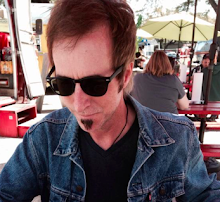Remember the Tamagotchi? It was popular with teens and
preteens in the late 1990s. Owners of these pocket-sized toys were told, “The Tamagotchi
is a tiny pet from cyberspace that needs your love to survive and grow. If you take
good care of your Tamagotchi pet, it will slowly grow bigger, healthier and
more beautiful every day. If you neglect your little cyber creature, it may
grow up to be mean or ugly.”
The question or game of it all was to know, “How old will
your Tamagotchi be when it returns to its home planet?” Or, as the kids knew,
before it died. Its survival was up to
the owner, or virtual caretaker as the toy manufacturer referred to them. But
its death was inevitable. As with everything else that comes into the life of a
child, it runs its course. The ecosystem for the pet would change considerably
if the owner discovered the opposite sex, lost his backpack, was grounded,
joined a cheer or sports team, or otherwise got busy with something more interesting
than the digital pet in their pocket.
It’s that way in the real world too.
We live in an always tuned in, on-the-go world where apps
own every conversation and Facebook is the Internet. Yet, you have a website that
like that forgotten Tamagotchi hasn’t adapted to the changes in the (web)
ecosystem. And now? It’s dead.
It’s dead to the referring physician upon whom you rely for
business development.
It’s dead to prospective patients who rely on it to
determine the role you might play in their care beyond medical jargon and
outdated resources.
It’s dead to the caregiver, referring physician or
healthcare partner who learns through images and video.
And it’s dead to anyone who might dare expect to connect,
gather or interact with you when they’re sitting with an ailing family member
or on the bleachers at soccer practice.
It’s dead because five changes occurred within the web
ecosystem and you failed to adapt.
The web became about
shared experiences. People want to be where their friends are and where
people with shared values or common interests and concerns can interact.
The web became about
personalization. People want to know that you know who they are. You have to know what returning audiences
find useful, recognize what they need more of and allow them to share what
they’ve found useful elsewhere.
The web became about
engagement. Users are no longer content to simply look at your info. They
want to talk about it. Leave comments. Share ideas. See comments from others.
See comments from you regarding their comments.
The web became mobile.
Smartphone ownership is a pandemic. Your website has to have meaningful
functionality and legible text on the smartphone form factor. For many, it has
become the preferred touch point. But at the very least it must be a capable
companion to the desktop experience.
The web became more
visual. Pictures are still worth a thousand words. And they are among the
most valuable assets your website can use to communicate your values, present
your service, educate your audience and entice them to share what they learned
on your site with others through a variety of sharing utilities.
What happened to the web ecosystem? It became social. You
know social, right?
It’s that thing you do every time you share an article,
click like, reply to a friend’s comment, upload a photo or subscribe to content
from those who engage and inform you. And it’s not just for Facebook, Twitter and
Pinterest. It should drive your website strategy.
People on social websites feel like somebody. And while you might not have noticed, sites that
use social plugins and methods have empowered your patients and their friends.
They’ve set an expectation for something more than well, what you’re doing on
your website.
The Tamagotchi had a speaker. It was the cyber pet’s mouth,
so to speak. Certain tones or beeps would convey the pet’s status – I need
water. I need sleep. I need you to play with me – it’s plea that you’d
something.
So, consider this your website’s plea for you to do
something. The savvy Tamagotchi pet owner knew how to reset the toy when he or
she recognized it was near death. I bet I know a kid or two who might be able
to reset your website. And now you know what must be done for it to “grow
bigger, healthier and more beautiful every day.”
